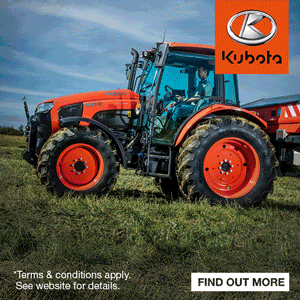Case IH reveals ‘big beast’ – and displays tech developments
8th November 2023
Ahead of Agritechnica, Case IH gave a glimpse of the products to be released and other concepts in development. The preview day in Austria provided the chance to see them at work.
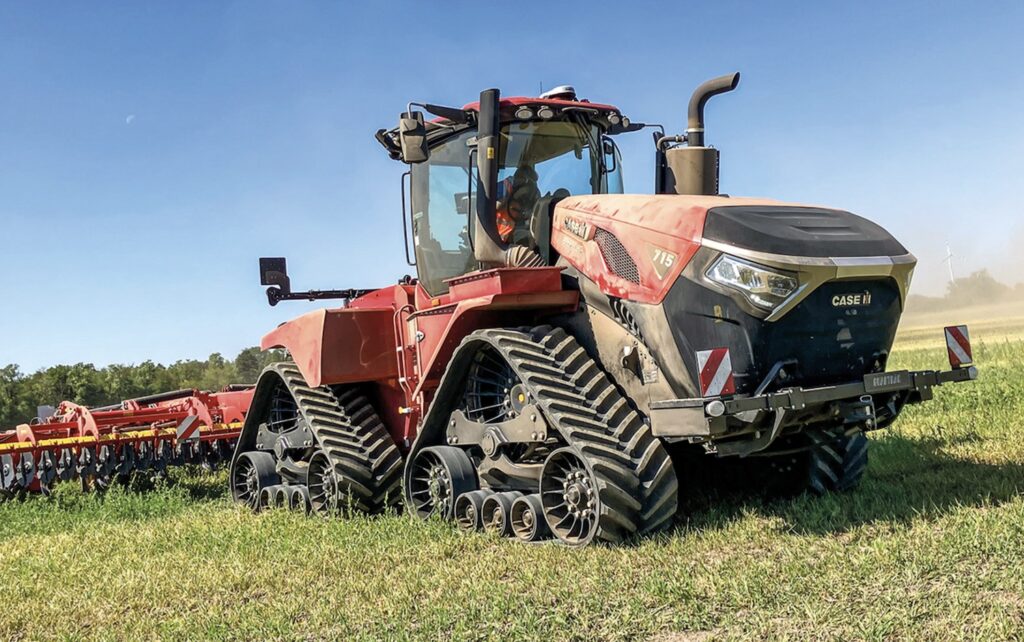
According to Case IH, the economic, efficiency and environmental benefits of enabling one operator to do more with one machine have influenced the development of its new largest tractor – the Quadtrac 715 AFS Connect. With a peak output of 778hp, it’s reckoned to now be the world’s most powerful production tractor, and sits atop a line of other revised 522–699hp Quadtrac AFS Connect and Steiger AFS Connect tractors, but has distinct styling and other features.
“The Quadtrac 715 development is about more than more power,” said Franz Josef Silber, Case IH product manager for high-hp tractors.
“It’s about ensuring implements are operated at their ideal speed for best performance and higher work rates, and allowing operations to be performed at the ideal time and with maximum output in short weather windows. We also wanted to boost soil protection via a bigger footprint and fewer passes, which also means greater efficiency and minimal trafficked land.”
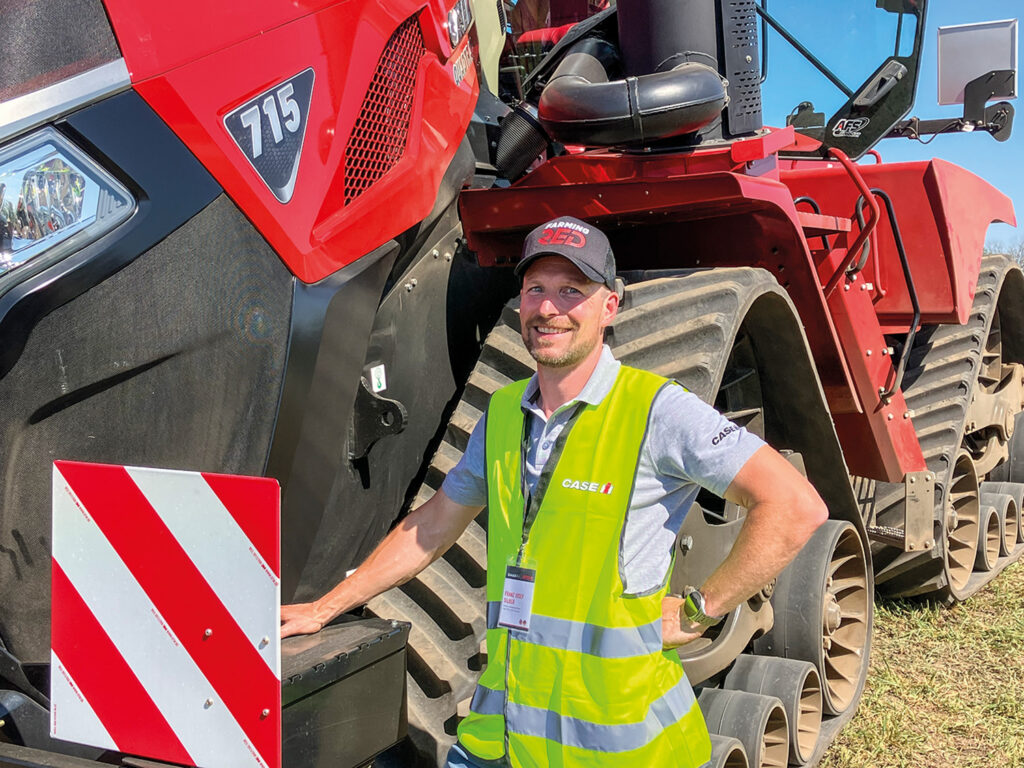
The Quadtrac 715’s uprated track units increase footprint by 6%, and the 1,008mm drive wheels help ensure engagement with five track lugs for enhanced power transfer, said Franz-Josef Silber.
The Quadtrac 715 features FPT’s Cursor 16L TST engine, making its debut in a tractor. Displacement is 23% greater than the next-model Quadtrac 645’s Cursor 13L TST, delivering 778 peak horsepower at 1,900rpm and 3,255Nm peak torque at just 1,400rpm. TST denotes the twin-stage intercooled turbocharging system, said to ensure fast response under load, while further features include an improved EGR-free combustion chamber, a 2,500Bar common-rail injection system and increased maximum cylinder pressure up to 220Bar, a package said to produce more power with greater efficiency and low fluid consumption. To match the higher output, the rear frame’s wider saddle tanks hold 1,968 litres of diesel.
The larger capacity twin turbochargers each have an air-to-water cooled intercooler, and Stage 5 emissions regulations are met via a simplified selective catalytic reduction (AdBlue-based) system.
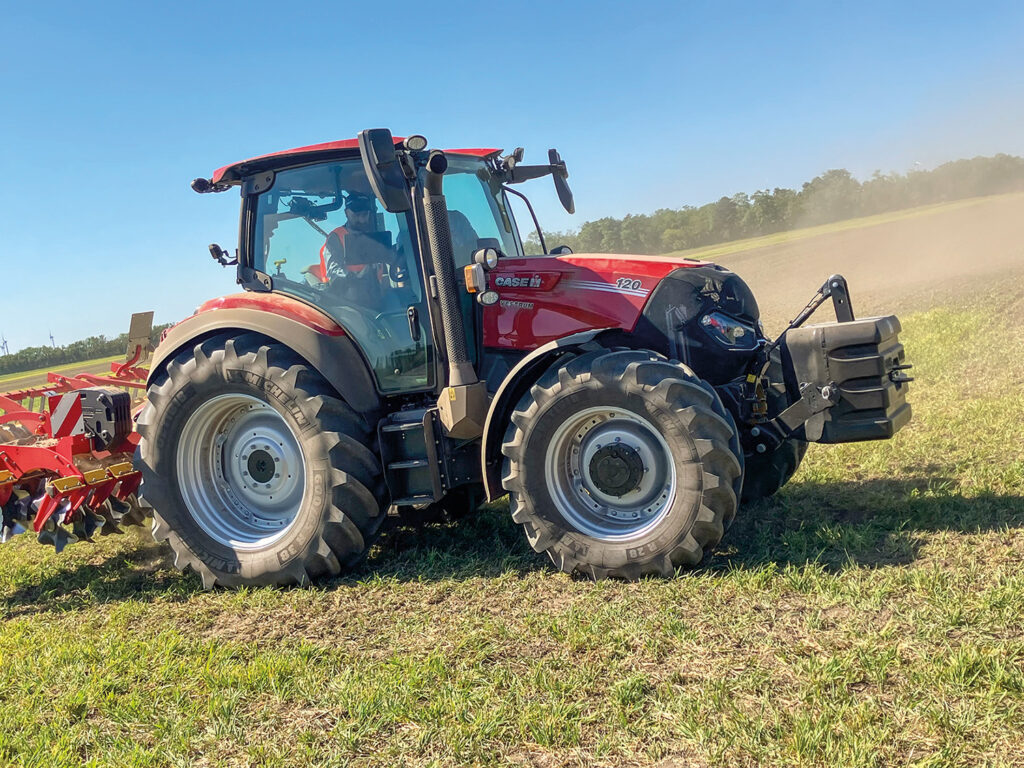
The ActiveDrive 8 eight-step/three-range powershift from 116–145hp Maxxum tractors is now an option for the 110–140hp Vestrum models, in lieu of the established CVX CVT.
Track units upgraded
The Quadtrac 715’s new heavy-duty track units are another major change over other models in the Quadtrac range. They provide 6% more footprint, while at 1,008mm the drive wheels are almost 100mm larger, and mean five track lugs are engaged with the drive wheel rather than four, to handle the higher torque and maximise track life.
The Quadtrac 715’s styling is a marked departure from that of its stablemates, with a distinctive new bonnet, which can be raised higher for enhanced service access, with electric raising/lowering via a switch near the cab steps.
A Category 5 drawbar matches the 715’s implement-handling capacity, while an optional category 4 three-point hitch lifts 9,897kg, and up to eight remote valves are supplied from either a 260-litres/min or optional 514-litres/min twin-flow SmartTorque hydraulic pump.
The new 715 sits atop four further new Quadtrac models and two wheeled Steiger options, all also featuring AFS Connect, which retain more familiar styling but also gain new features. They cover a 522–699hp range, from Stage 5 engine upgrades said to improve engine response time by up to 35%. Engines benefit from an updated fuel system with new fuel injection and a new fuel lift pump. Transmission options include PowerDrive powershift and, on models up to the 555, CVXDrive continuously variable transmission.
Cab updates include a roof-top design with new roof lights available, a premium sound option, RAM monitor mounts and additional console storage. A second AFS Pro 1200 display is optional to allow separate monitoring of Isobus implements.
Vestrum now with powershift option
For farmers looking for something with a little less horsepower, Case IH’s ActiveDrive 8 eight-step/three-range powershift, as established on its 116-145hp Maxxum tractors, is now also an option for its 110–140hp Vestrum models for customers not requiring the full capabilities of its CVXDrive CVT. The three ranges have speed bands of 0–10.7kph, 4.3–18.1kph and 0–40kph, while a skip-shift function allows quick powershift step progression. A creep speed option is available for specialist applications.
“Visitors to Agritechnica – or, in the near future, their local Case IH dealer – will also be able to see further Case IH updates and introductions,” said Ross Macdonald, utility tractor product manager at Case IH and Steyr parent CNH Industrial.
“They will include the new Optum 340 CVX tractor and some significant harvesting product developments, plus a revised seven-model Farmlift telehandler range with variable-flow 160-litres/min hydraulics, new smart hydraulic features, an electro-hydraulic self-levelling headstock and multiple cab comfort and operating upgrades.”
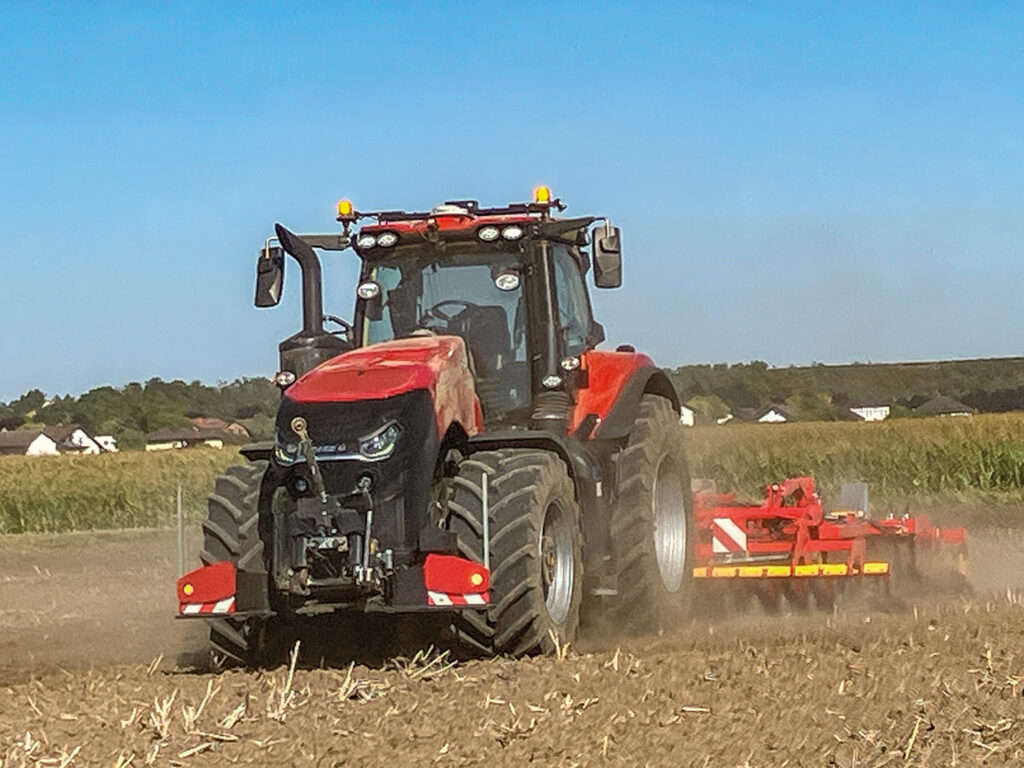
The Austrian field event featured one of the first public European demonstrations of the fully-autonomous development of the Case IH Magnum.
Autonomous tractor demoed in the field
A highlight of Case IH’s early autumn field event in Austria was the chance to see at work the fully-autonomous development of its Magnum tractor. Said to have been designed in response to farmer demand in certain regions for equipment to help meet labour challenges, allow skilled staff to be relieved of monotonous tasks and focus on those better suiting their skills, make the most of weather windows and enhance productivity via 24-hour working, this was the first time the machine had been shown publicly at work in Europe.
Beyond its ability to operate autonomously, the tractor has specifications that otherwise match its conventional cousins in areas from engine power to transmission type and implement handling capabilities. The latest development machine can be operated supervised – with an operator as an observer in the cab and able to manage the tractor’s autonomous and other systems – or unsupervised and driverless, being managed and monitored remotely.
“Our research suggests farmers believe such a system will be most beneficial where they can operate one machine in a field and have another working alongside it without an operator,” said Alessio Quatraro, EMEA product manager for autonomous driving at Case IH.
“When the cab is unoccupied, the tractor is started and stopped using the tablet interface via a wireless internet connection. The current incarnation of the tractor is able to operate autonomously at up to 24.1kph (15mph), with perception system development ongoing to allow for higher speeds. With an operator in the cab, it’s possible to operate at field speeds within the machine’s capabilities. Tougher soil areas or hills/hollows can be mapped when planning operations to ensure forward speed is adapted where necessary to account for adverse conditions.”
During operation, a combination of cameras and radar is used to constantly monitor the tractor’s surroundings for obstacles and motion initiation. Using artificial intelligence, a continuous stream of images is processed and interpreted and any obstacles identified. If one is detected, the tractor halts and the owner/manager’s linked smart device receives an alert, allowing the situation to be assessed and the next course of action determined. Should an obstacle detection sensor fail, there are integral fail-safe procedures to operate equipment in a safe mode until human intervention is possible. If a sensor should fail – very unlikely, says Case IH – the machine stops and sends an alert to the operator’s smart device.
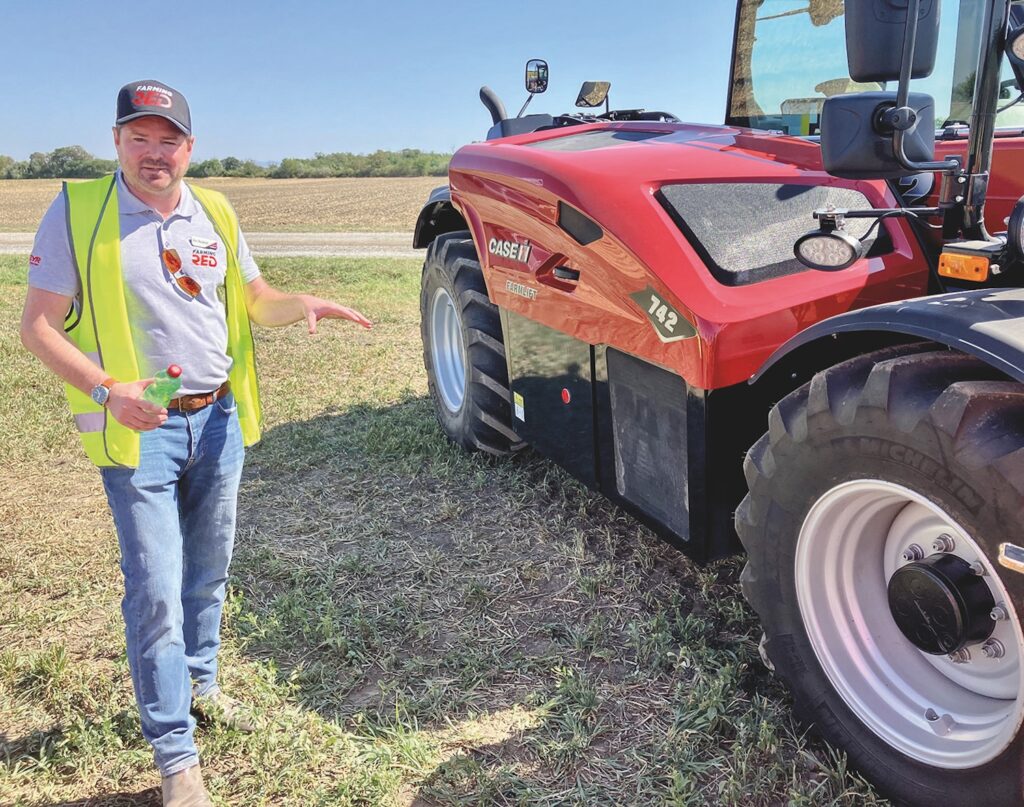
UK-based Ross Macdonald said there was more to come at Agritechnica from Case IH, including Farmlift telehandler updates.
“Low light levels and darkness do not affect operation of the tractor and its systems, with additional lights fitted to ensure full functionality of the perception technology is maintained in such conditions,” explained Alessio.
“Once work is completed in a particular field, the tractor can be driven by an operator to its next destination.
“We have displayed our intent in autonomous tractor development at various points over recent years, with the project continuing to advance as systems are thoroughly tested and validated.
“While we continue to adapt, develop and update as technology evolves and legislation changes, we are progressing the project with a long-term goal of commercialisation.”
